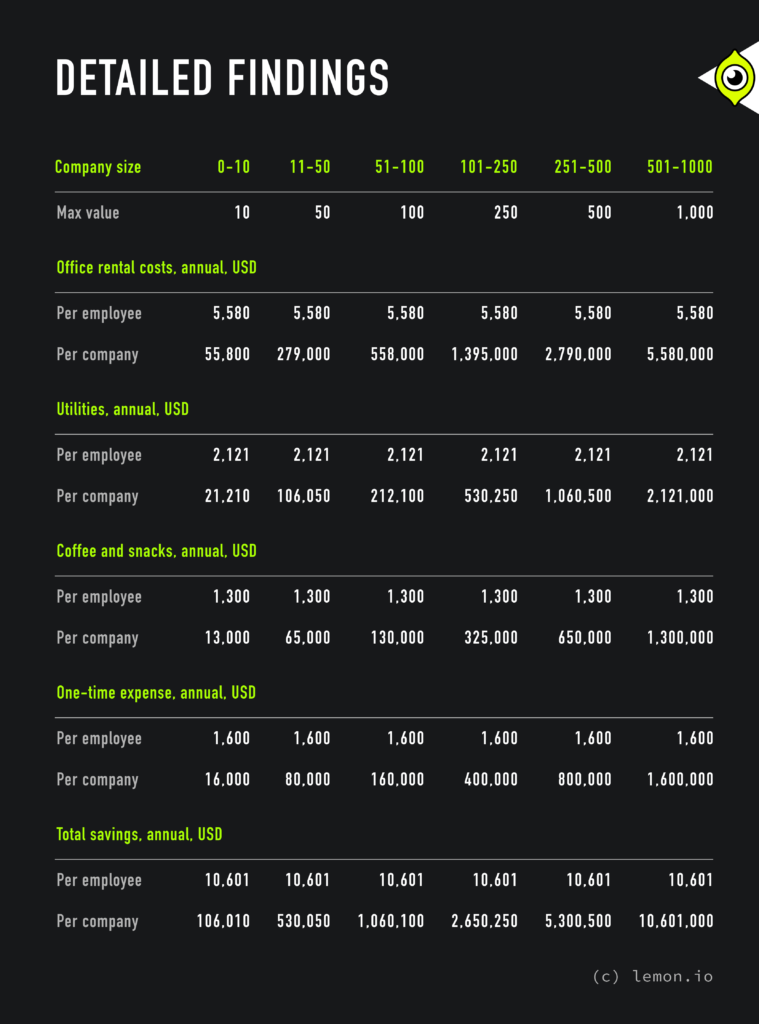There are many myths and misconceptions about remote work, but one thing is clear: employees often crave and expect this option. Nevertheless, many founders are still hesitant about offshore. Some even demand their staff to return to the office for fear of losing control or productivity decline. They fail to acknowledge that remote work has its perks for employers — money savings being among the main ones.
Research shows that companies shifting to remote work save $10,600 per worker yearly.
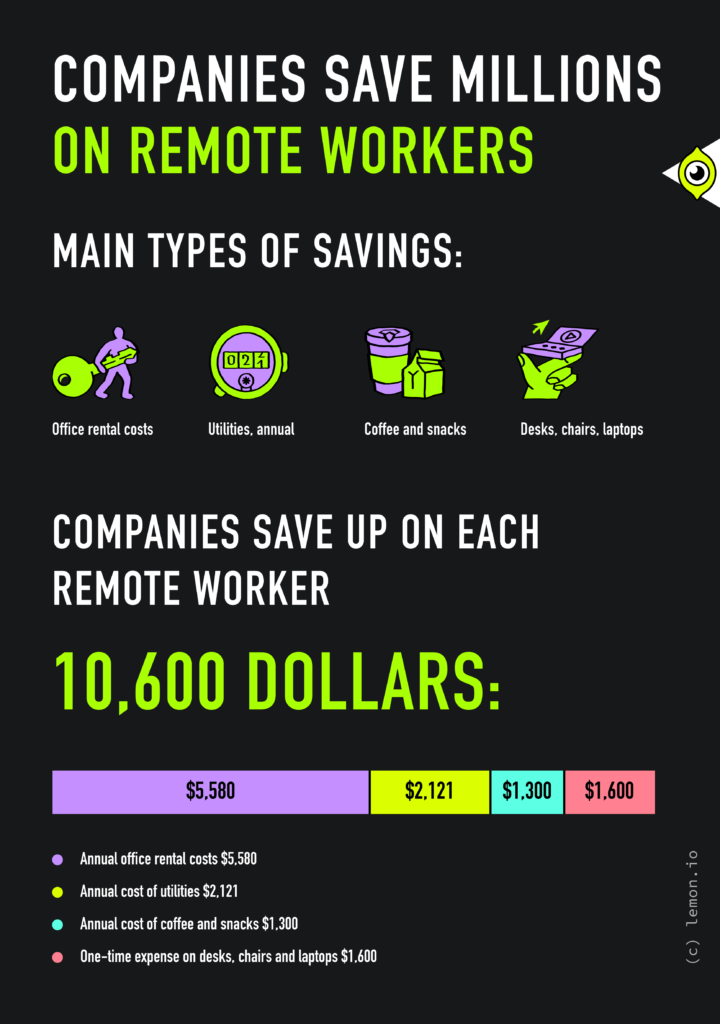
Let’s dig into numbers and details.
Office rental costs
On average, work areas should be at least 120 square feet per employee. The medium individual workstation should measure about 50 square feet, with the rest of the space allocated for storage, meeting rooms, kitchen area, walking space, and office equipment.
The price for one square foot of rental office rental in top-10 US tech hubs varies from $25,41 in Pittsburg to $87,18 in San Francisco, with $46,5 per square foot per month being the market average, resulting in $5580 of annual rent space per employee. Quite a sum, isn’t it?
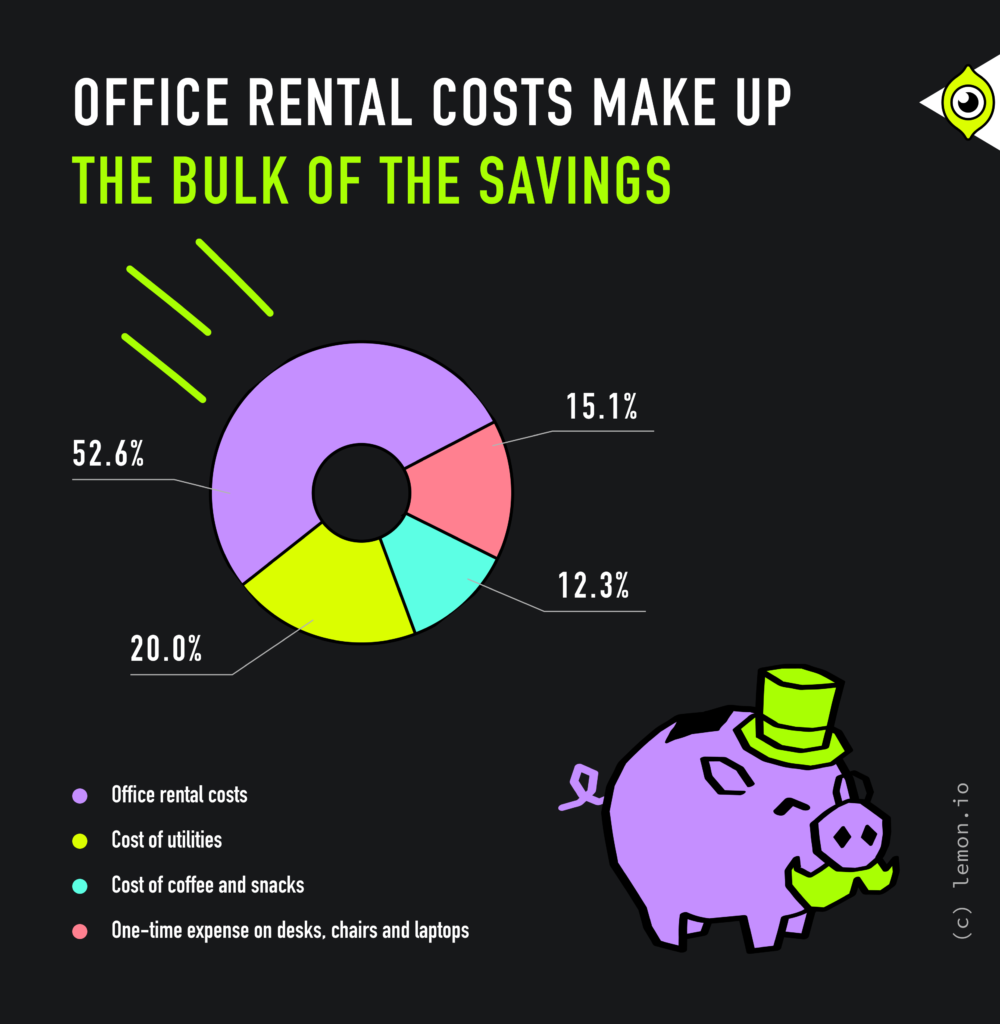
Utilities
Generally, the total annual operating costs in a commercial office space equal about $17.68 per square foot.
This sum includes repairs and maintenance, utilities, and other expenses.
How much money will a company spend on utilities for one employee, then?
1 employee ≈ $2,121/year (120х$17,68)
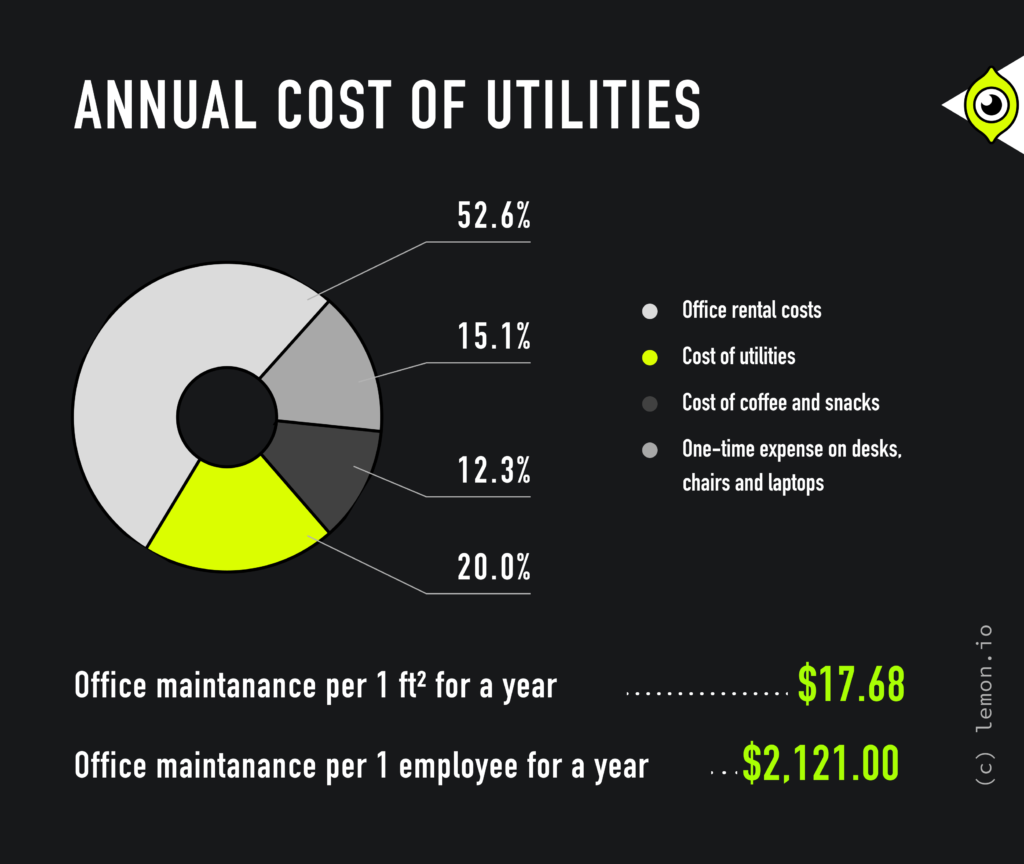
Coffee and snacks
When the office team is not busy working, they gather for coffee breaks, snacks, etc. If you allocate $5 for employees’ daily snacks, their annual cost will be $1300 for each employee.
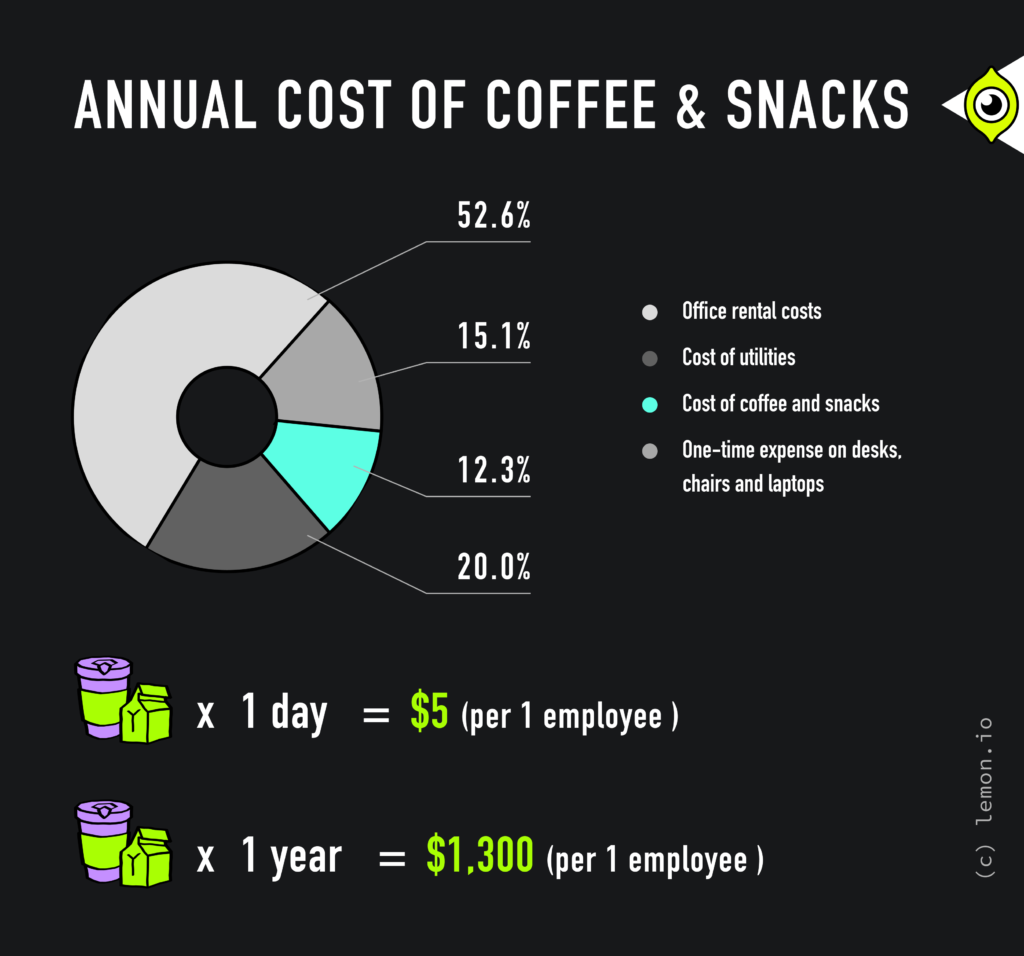
One-time expenses
At the very least, each office team member requires a desk (≈35–50$), a chair (≈40–60$), and a laptop (≈1000–1500$). Their total price conservatively adds up to an 1100–1600$ one-time expense.
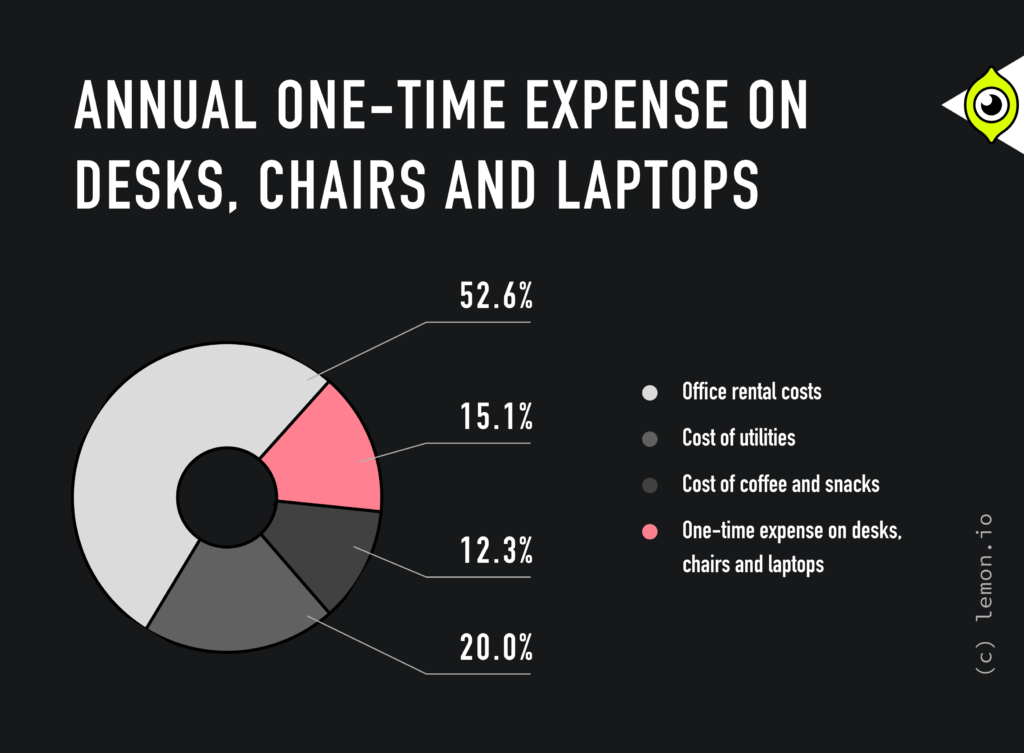
Deductibles
Some employers offer reimbursements for cell phone plans, team lunches, internet costs, and utilities used for work, which generally do not exceed $100 per month. A few cover co-working expenses of $200–400 a month or offer a one-time stipend of up to $500 to help set up the home office.
Interestingly, particular companies even offer payments for items and activities that help you take a break and recharge — such as gym memberships, massages, or personal development expenses.
Even when your business starts small, we know you’re thinking big. Spearhead the app revolution, beefing up your company with top tech talents — hire top engineers with us. Free yourself for greater deeds!
“Each quarter, you are allowed to reimburse $150 for our monthly Fresh Air Friday days. I’ve personally bought running shoes and free weights, and my employee bought a musical instrument and a subscription to a meditation app. The only catch is you have to upload pictures of your Fresh Air Friday day (no need to show the purchase) to our Slack channel each month,” — says Matt Darrow, CEO and co-founder of Vivun, a global provider of Buyer Experience (BX) software.
The bulk of reimbursement packages generally doesn’t exceed $100/month or $500 one-off payments.
What else is there? Hiring remote workers from outside of the US unlocks even more money-saving opportunities
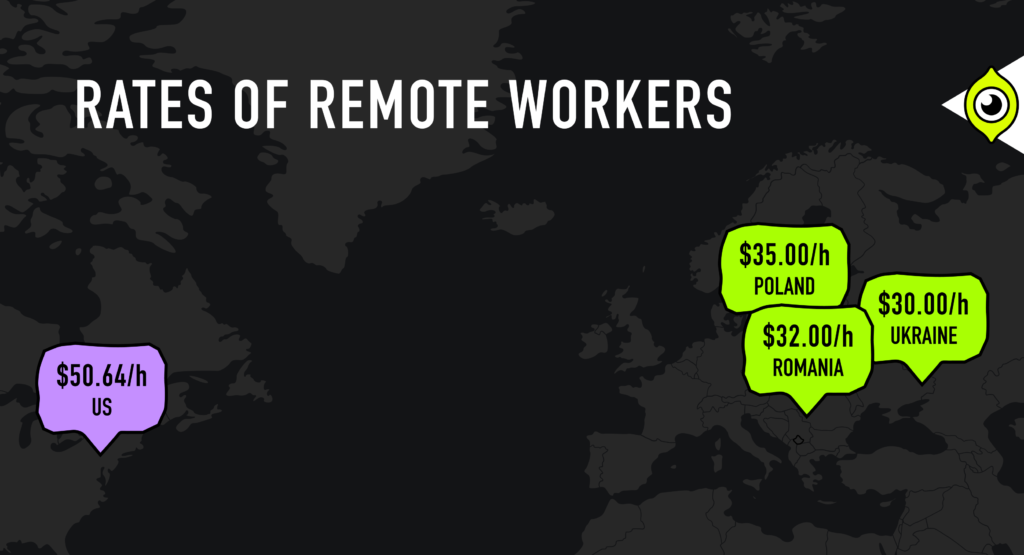
Offshore hiring allows companies to look for talents in any location, including emerging markets, which are often full of world-class specialists with lower salary expectations and more favorable taxes.
Nearshore software development offers a similar advantage but typically involves working with talent in nearby countries, reducing cultural and time zone differences for smoother collaboration.
What are the average hourly rates in different European countries for 2022?
US: $50.64
Ukraine: $30
Romania: $32
Poland: $35 (source)
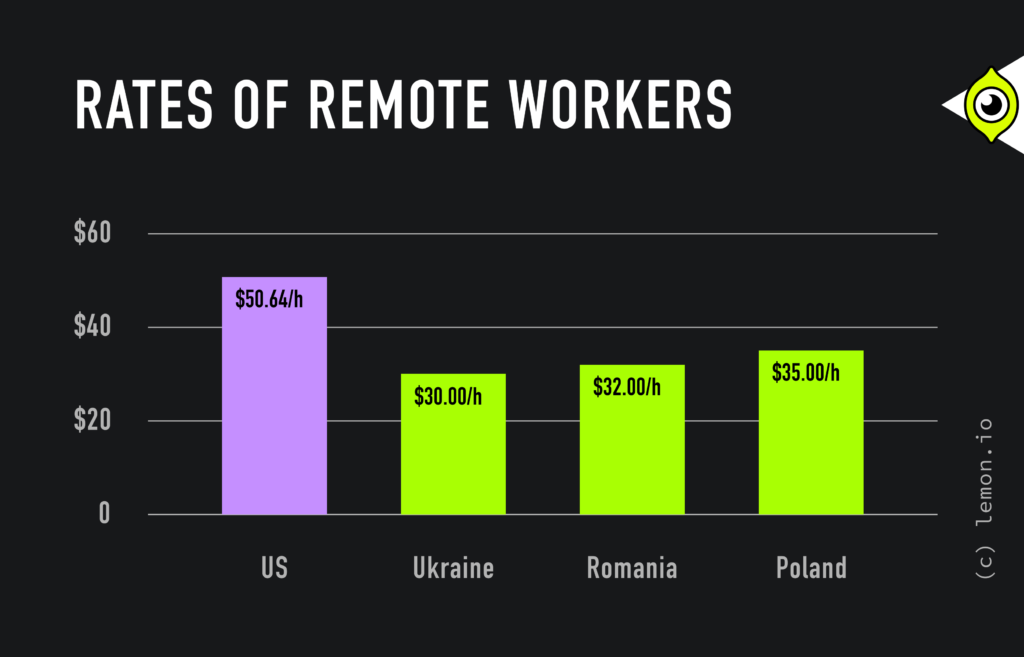
What to expect from remote hiring?
Remote employment comes with a set of apparent advantages. Hiring remotely, you gain access to a bigger talent pool, save lots of money, and, of course, cater to the requirements of modern workers who prefer sparing time on commuting and maintaining a better work/life balance.
Here’s what Kari DePhillips, the CEO of The Content Factory, states:
“I ran the math, and on average, my team saves 500+ hours per year (each) by skipping the “get ready for a job you’re already ready to do” routine + commute to a downtown office and back.”
Access to a bigger talent pool for those employers who hire remotely isn’t always tied to geography. Kari shared that she had employees with chronic conditions who wouldn’t be able to work in a traditional office environment. Nevertheless, they performed pretty well from the comfort of their homes, thus showing that remote mode also unlocks new opportunities for genuinely inclusive work.
Does remote hiring have any downsides?
Yes, but they’re fewer than its bonuses.
Oftentimes, global remote hiring requires more paperwork and routine HR processes, and you should be ready for it.
Here’s what Richard Mabey, CEO and co-founder at Juro legal tech company, underlines:
“Companies need to be able to handle cross-border employment, as much as compliance issues, and manage local employee rules and regulations. Local hiring is relatively easy. Hiring specialists to work from anywhere is more complex. Employer of record model sometimes helps, though compliance with local law and regulation is still required.”
Informational security is another thing to consider before stepping on the road of remote hiring.
“Since our remote workers aren’t always operating under our robust in-house cyber security measures, even just one slip-up from an off-site working employee can have massive ramifications for our proprietary methods remaining need-to-know,” — underlines Teresha Aird, co-founder and CMO of Offices.net, an online commercial real estate brokerage.
Cross-cultural aspects can contribute in both ways.
On one side, a diverse, multicultural team allows the company to gain new knowledge and benefit from learning new work ethics and approaches. On the flip side, there’s a constant risk of cultural gaps. Interestingly, some countries have their requirements for remote work. Marie-Agnes Deharveng, Head of People at the video engagement platform Livestorm, shared that reimbursing remote employees is a regulated benefit for their French employees.
“People coming to the office and working remotely cannot have different benefits, and meal vouchers are part of the essential kit,” — said Deharveng.
Wrapping it all up
Remote work, a necessary but quite stressful novelty during the lockdown, has become essential for many employees and employers. Studies have shown that professionals frequently expect an option of remote or hybrid work. It saves loads of time, enabling them to live happily, maintain a better work-life balance, and work productively.
Companies also benefit from the remote; it unlocks tremendous money-saving opportunities and opens up access to a greater talent pool in emerging markets, like hiring senior developers in other countries. It means you can hire more world-class talent at a better price.
WhatsApp, Grammarly, Gitlab, and Solana were all founded or co-founded by Ukrainians. Google, Samsung, and Amazon have research and development centers in Ukraine. Siemens, Microsoft, and Intel are among the companies that bet on Polish talent in their R&D. IBM, HP, and Oracle have set up offices in Romania.
The lockdown has shown that remote work can be highly effective. The possibilities are endless. Companies can invest in processes and policies, train employees, and maintain team spirit to ease adaptation to remote work.
Digging in details
To determine the savings on remote work, researchers from Lemon.io have broken down companies into a set of sizes based on the number of employees: 0–10, 11–50, 50–100, 101–250, 250–500, 500–1000, and 1000–5000. Researchers used market averages for rent, utilities, snacks and beverages, furniture, and gadgets from open sources. The rental price analysis included the ten largest US hubs.
